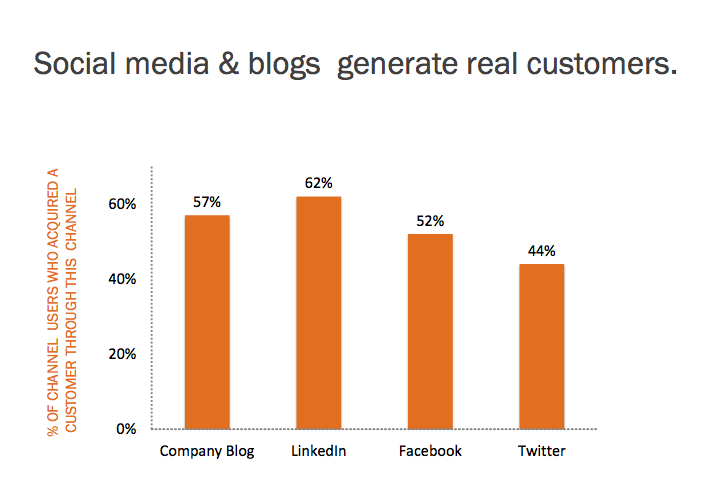

We all assume that just about everyone uses social media, but the actual statistics are staggering. According to recent research, 74% of internet users participate in social media in one way or another.
In other words, if your business isn’t social, you’re missing out on a huge opportunity to reach your audience.
But before you start creating a marketing plan, use caution. While there are no hard and fast rules that work for everyone across the board, certain misconceptions about social media can undermine your efforts.
Here are some myths that every marketer should avoid, no matter your industry.
(And for a complete social media marketing plan for your business, contact SPINX Digital today).
There are only 3 worthwhile social networks for businesses
Facebook continues to dominate social media at 1.35 billion active monthly users; Twitter remains a go-to for a brands’ customer service channel; LinkedIn is a popular platform for professionals looking to network.
However, other social networks are ideal for different kinds of opportunities. Pinterest, for example, is great for any ecommerce operation, as it relies almost exclusively on visual content. You can post alluring, dynamic images of your products, network with similar companies, and build an audience. Unlikely industries are also succeeding on Pinterest, such as Healthcare, Engineering, Politics and more.
Meanwhile, Google Plus allows for more text in a post than other networks, which could benefit an info-based B2B brand; Instagram is ideal for sharing pictures of people, products, and ads; and if you’re using video, you need YouTube.
Social media isn’t for direct sales
While social media is a powerful tool for directly engaging with your customers and fans, it can also generate sales. Dell famously made 3 million dollars from a promotion on Twitter. With a carefully measured, promotion-focused strategy, any company can improve their bottom line through social media.
But stand-alone sales aren’t the only way social media can help. Many brands use them to build relationships with their audience, which in turn create customers in the long run.
Check out this graph from HubSpot to see the sales potential for different platforms (including a company blog).

Forget marketing to seniors; they don’t use social media
Seniors are stereotypically regarded as incompetent when it comes to technology. We presume that they’re too old to understand the internet, let alone able to operate a social media account.
However, these assumptions conflict with facts. Reportedly, as of 2013, 43% of Americans over 65 use at least one social media site. That number actually marks a 17% increase from the previous year.
If your business caters to an older crowd, make sure you include it in your social media strategy. Like everyone else, this demographic wants to feel included.
Social media campaigns always work
When used strategically, social media marketing campaigns can create audiences, build relationships, and increase sales. But not all campaigns succeed.
One thing many digital marketers forget is that people don’t go online for the advertising. In fact, according to one study, 62% of people surveyed said that social media didn’t influence their buying decisions.
For me, the big takeaway here is that social media shouldn’t be used as a sales pitch. Certain brands may have success with different platforms’ promoted posts, and one-off promotions can work, but the key to success is cultivating trust and interest among your followers. If they’re compelled by your brand, they’ll likely become customers.
Only some industries are social
Some brands translate more naturally to social media. If you’re a B2C with an exciting consumer product that’s inherently photogenic and can be easily promoted, your campaign creates itself.
However, it’s a mistake to assume that a B2B with a technical product or abstract service can’t gain attention or even go viral.
(Ecommerce security company, VeriSign’s “Cart Whisperer” viral campaign)
With a little creativity, brands like IBM, Cisco and VeriSign all cultivated an entertaining and compelling social media presence. The formula to their success wasn’t rocket science. They simply started by addressing their audience’s core questions and challenges, and proceeded from there.
Calculating ROI in social media is impossible
True, there is no magical “Calculate ROI” button for social media marketers. However, anyone can determine the return on investment as long as specific metrics are set before the campaign begins.
Whether you’re measuring the performance of certain posts, landing pages, views, or even purchases, you need to establish your goals, what assets you’re going to create to achieve them, and measurement tools such as Google Analytics.
With the right metrics in place, you can track and adjust your campaigns for maximum success.
Social media is for company channels only
Social media is an excellent platform for brand storytelling. In other words, by sharing the personality of your business, you increase your chances of connecting with your audience.
Don’t just share company facts or industry trends. People respond to other people more than a brand name. Enlist your employees to use social media, and encourage them to offer up a mix of industry and unrelated topics. They don’t have to share every detail about their lives, but a little personality can endear a user to your company. Tools like Addvocate can help you manage this process.
The post Avoid These Social Media Misconceptions at All Costs first appeared on Web Design & Digital Marketing Tips.